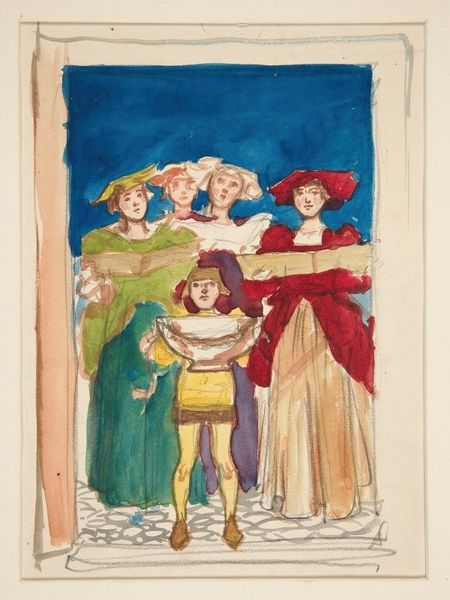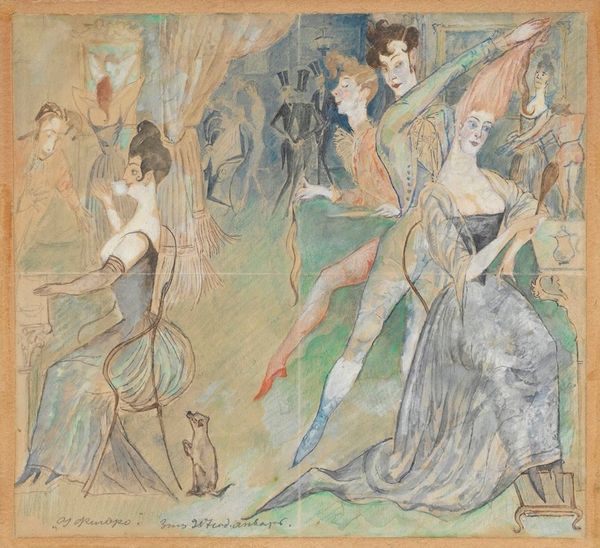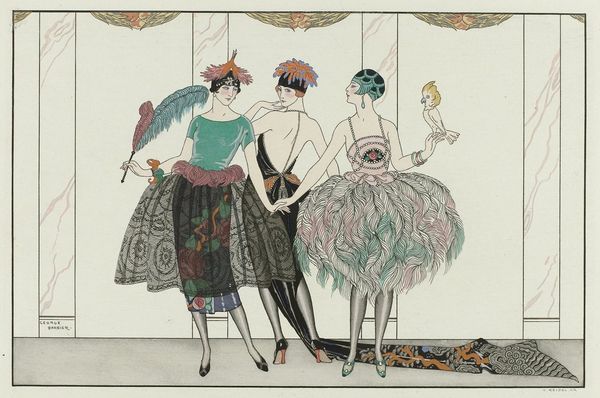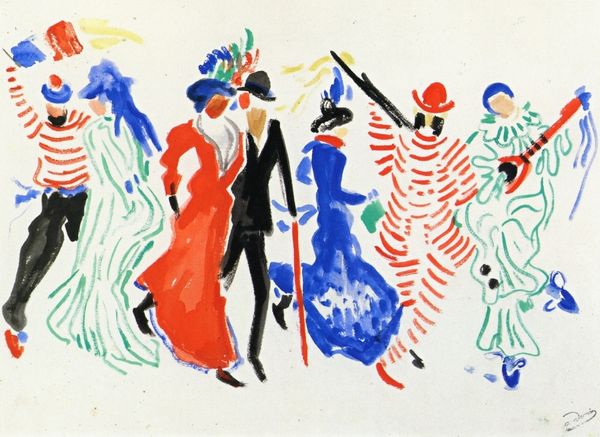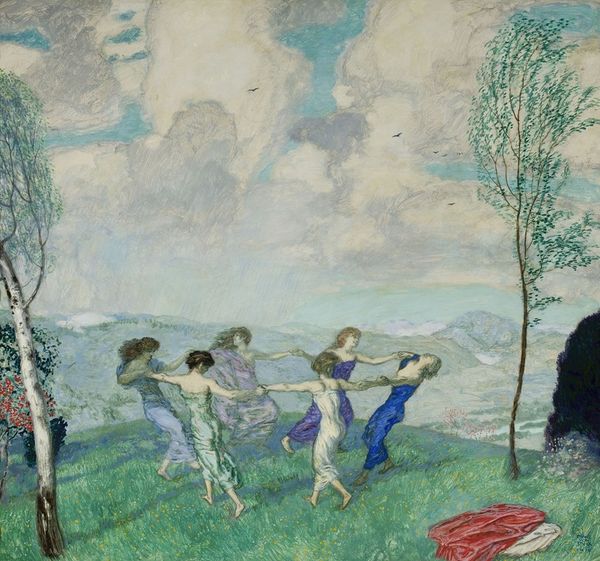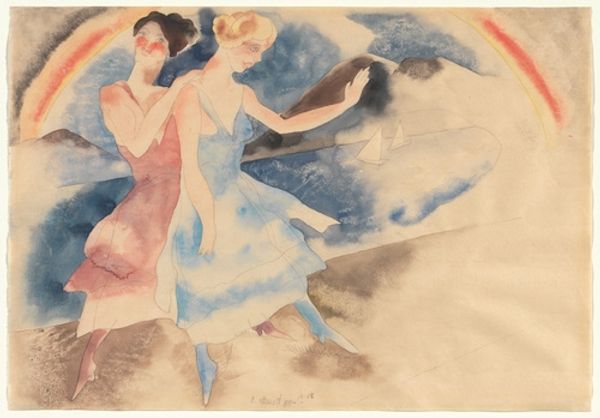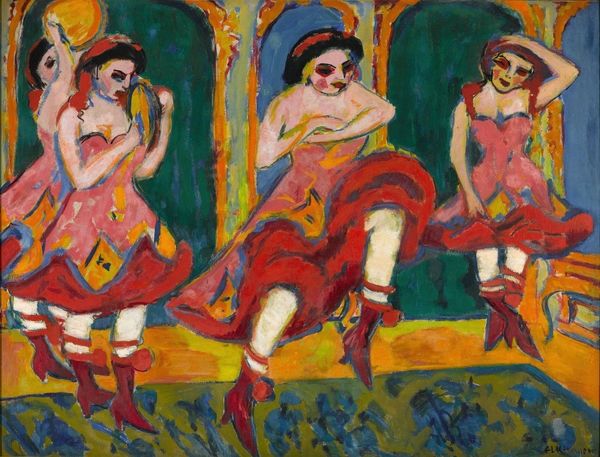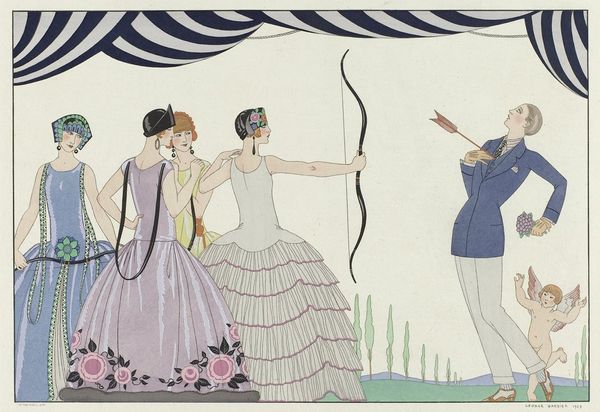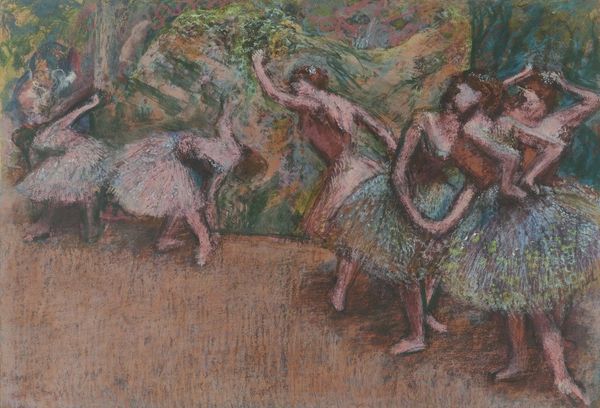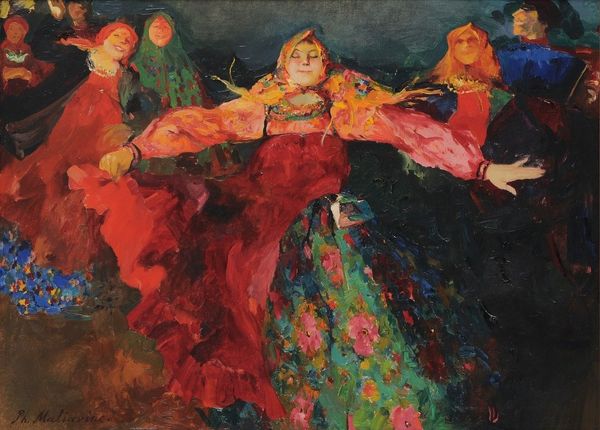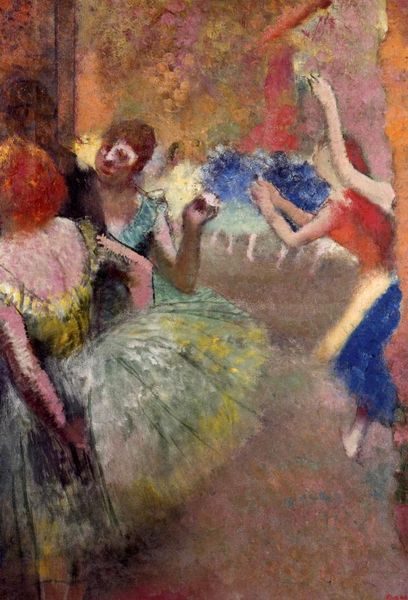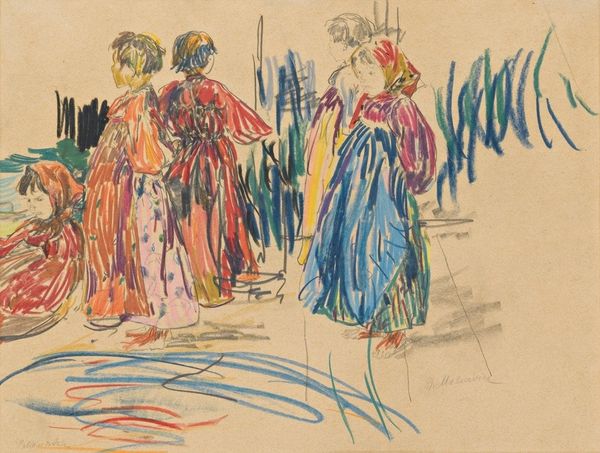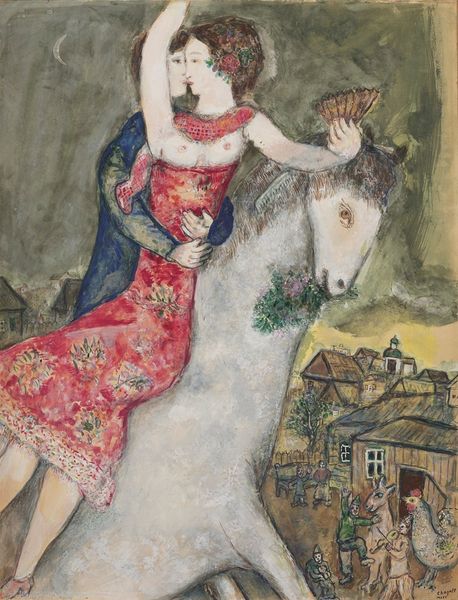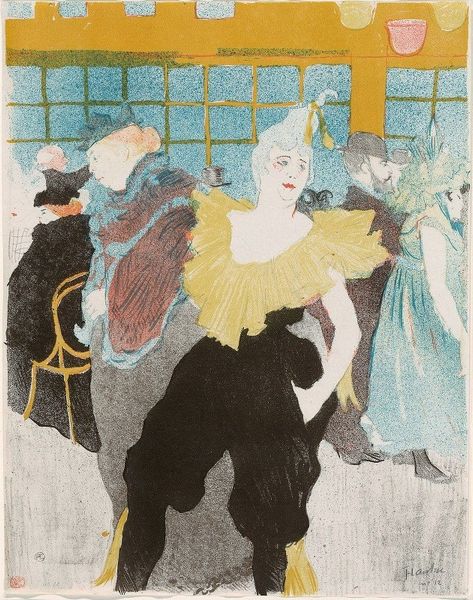
Euridice and her Snake, Two Tango Dancers and St. Francis. Costume design for the artist's ballet "Orphée of the Quat'z Arts" 1912
0:00
0:00
florinestettheimer
Museum of Modern Art (MoMA), New York City, NY, US
Copyright: Public domain
Curator: Welcome. Here we have Florine Stettheimer's 1912 gouache and watercolor piece, "Euridice and her Snake, Two Tango Dancers and St. Francis. Costume design for the artist's ballet "Orphée of the Quat'z Arts" ". Editor: It has an immediate sense of theatricality and dreamy elegance—a certain visual whimsy with its use of colour. Curator: Indeed, it captures that playful dynamism through Stettheimer's distinctive stylistic approach. There's a very palpable feeling of gesture and movement that really shines in its overall composition. Editor: I wonder if we can delve into the role that gender and artistic expression play within that frame? The women and even St. Francis seem to transgress accepted gender roles in dance, art, and performance. The serpent around Eurydice and the gender presentation in the Tango Dancers really emphasizes it, I think. Curator: It's fascinating how Stettheimer plays with gender through a combination of conventional ballet performance. Notice the dynamic interplay between figure and ground that results in a flattening of form that really disrupts traditional perspective in favor of surface pattern and colour. Editor: Looking through a broader context, can we consider how the ballet represents or interacts with patriarchal societal constructs and potentially overturn them through representation of mythological figures like Euridice alongside St. Francis? I wonder about this interplay between power, sexuality, and the social expectation on femininity, particularly during the pre-war period in which the piece was conceived. Curator: By isolating those key elements of color and shape from representational narrative, she emphasizes their independence and allows them to form new relationships, not rooted in convention. That tension is so apparent. Editor: That allows us to unpack this rich moment in art history; it offers us multiple interpretations. The formal language of the painting allows us to explore broader questions about the intersectionality of artistic expression and society! Curator: Yes, I couldn't agree more.
Comments
No comments
Be the first to comment and join the conversation on the ultimate creative platform.
